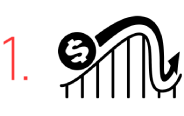CASE STUDY: How We Helped a Business Grow & Exit for $1.7M
Last updated August 2024
By Allan Bayer, Partner at Accountant Partners

When I met Jim, a CPA sole proprietor, he had hit a wall. He was a one man show, trading time for money, and as there’s only so much time in a day, he found himself in a place where many accountants end up.
He was making good money, but it wasn’t enough to allow him to hire anyone to reduce his workload.
While he had his own business, it still felt like he was stuck on a hamster wheel, working tirelessly for his clients, and he couldn’t see a way out.
Instead of having the time and freedom that should be afforded to business owners, he felt like a slave to his clients, he was wearing all the hats, stuck doing administrative work that didn’t utilize his expertise, and he was approaching burnout.
And while he wanted to grow his business and take more of a backseat, as any business owner would, that felt like an impossible dream.
Fortunately, our paths crossed.
When I presented Jim with a different way of servicing his clients, one that would give him the ability to attract top clients who were willing to pay top dollar for more comprehensive accounting services, he was intrigued.
And when I showed him that he would only need 20% of the clients he had now, affording him the time and freedom he desired, he was eager to get the ball rolling.
Best of all, after 3 short years we increased revenue from $727k/year to $1.5M+/year, and a $1.7M exit for the owner.
Here’s how we did it…
We Established His Goals
We got to work establishing his goals and creating a strategy to get him there.
His goals were:
- Attract higher quality clients
- Better service those clients
- Increase the average hourly rate of the revenue per client
This would allow him to grow the business so he could have key employees and build enterprise value or sell internally.
And to Jim, this was more than a goal. He was at the point where he needed to build a sustainable firm that could run without him.
What Jim Was Doing Wrong
In order to achieve Jim’s goals, he needed to shift away from the service model that was making him a slave to one that would increase his revenue and decrease his personal time investment.
Here are the three main mistakes Jim was making:

He Didn’t Have Consistent Cashflow
Most accountants either charge their customers hourly on an as needed basis or yearly. Neither of those scenarios generate consistent cashflow, which is what is required if you want to be able to take some of the workload off of you and hire employees.


He Wasn’t Being Compensated for All the Work He Was Doing
As any accountant knows, there is a ton of admin work that needs to take place behind the scenes. Most sole proprietors are not accounting for this in their pricing, which is a big reason why they can’t hire employees. This strategy was accomplished with a combination of increasing the average hourly rate and moving to the monthly revenue model.


He Didn’t Have a Scalable Business Model
Business growth cannot happen if the business owner is getting paid hourly since there are only so many hours in a day. To grow, you need to create systems that are scalable and don’t require the business owner to be there.
The Strategy We Used to Turn Things Around
After determining where Jim wanted to go and what he was doing wrong that was preventing him from getting there, we developed a strategy that would make his goals possible.
Here’s what we did:
We Tweaked the Math
Instead of having 500 clients, each paying about $800 ($400K annual revenue), we tweaked the math so that he only needed 100 top clients, each paying $5000 ($500K annual revenue).
This made all of the following possible for Jim:
- He was able to hire a full-time employee who could take half the work off of him, allowing him to focus on his areas of expertise.
- He had more time outside of the office, which greatly improved his work-life balance and gave him a much deeper sense of fulfillment.
- Since he had so many less clients, he could give each client more attention and get them even better results.
We Leveraged the 80/20 Rule
The 80/20 rule, or Pareto Principle, states that 80% of results come from 20% of efforts, and this can be applied to any area of life and business.
In Jim’s case, we applied this principle in several ways:
- Client Profitability – We identified the 20% of clients who were providing 80% of the revenue and offered them our new premium service model.
- Service Efficiency – We concentrated on the 20% of services that generate 80% of the revenue.
- Time Management – We streamlined and/or automated repetitive tasks and prioritized those that fell into the critical 20%.
By leveraging the 80/20 rule, Jim was able to focus on high-impact areas, enhance efficiency, and drive greater profitability.

We Applied Dunbar’s Theory of Relationships
Dunbar’s Theory, otherwise known as Dunbar’s Number, suggests that people can only maintain a certain number of stable social relationships, which is approximately 150 individuals.
In an accounting business, this concept can influence client relationships, team dynamics, and organizational structure.
Since Jim was a one-man show, we focused this theory on clients. Having over 500 clients was too many. Not only could he not provide them with the premium service he wanted to give them, but he felt scattered and exhausted, as anyone would be from managing that number of clients.
By reducing his clients to 100 and charging a premium rate, Jim was easily able to solve those issues.
We Moved to a Monthly Revenue Model
When accountants charge by the hour or year, they tend to struggle with cash flow issues. Moving to a monthly revenue model is a strategic move that increases a company’s worth by 2-3 times since it streamlines cash flow on a monthly basis, allowing the hire of full-time employees. Plus, in this model, clients aren’t as sensitive to price increases, since an extra $50/month feels better than one lump sum of $600.
We Increased Prices Without Scaring Off Clients
As any accountant knows, there is a ton of admin work that needs to take place behind the scenes. Most sole proprietors are not accounting for this in their pricing, which is a big reason why they can’t hire employees.
This strategy was accomplished through a combination of increasing the average hourly rate and moving to the monthly revenue model.
We Offered Tiered Pricing
By implementing a three-tier pricing strategy, we could offer three different service solutions to his customers at three different pricing points, allowing Jim to close more clients.
According to a study done by the Columbia University Business School, when we lay out three options, 66% will select the middle option, 23% will select the low option and 11% will pick the high option.
As you can see, by only offering one choice, you’re leaving a lot of money on the table.
We Implemented Credit Card Payments
This is an easy strategy that many accountants don’t take advantage of. People are twice as likely to spend more money when they use a credit card, so while many accountants either don’t want to set up the card processing systems or don’t want to pay the fees, they are losing money in the long run by not implementing credit card payments.
What Were the Results?
Within just three years, Jim increased his gross revenue from $725K/year to $1.5M+/year and exit for $1.7M. Not only that, but his quality of life greatly improved since he had so much more freedom and time away from the office.
About The Author
Allan Bayer is an accomplished business leader with extensive experience in finance, management, and strategic partnerships. He has held various leadership roles, including President and Past President of the Mission Viejo Chamber of Commerce, where he focused on building strong relationships and fostering community involvement. Allan has also served as Vice President of Business Development & Sales at Apollonian Accounting and Business Services, and Partner at Glenn B. Hetzel & Associates, CPAs. His expertise includes tax management, business development, and creative problem-solving across diverse industries.
Are You Ready to Grow Your Business While Increasing Your Freedom?
Are you ready to grow your business, increase your freedom, and provide even better services to your clients? Set up your free consultation so we can help you achieve your goals!






